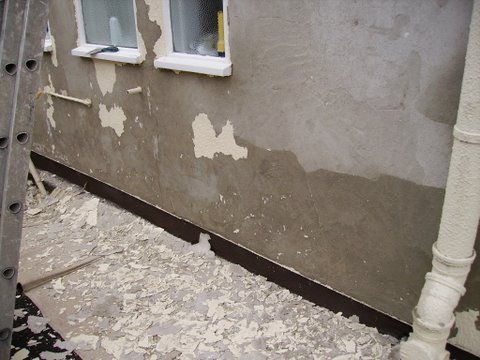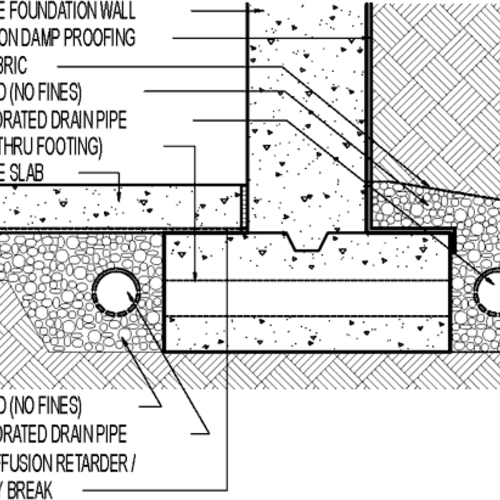The ultimate guide to mould treatment newcastle: Process from start to finish
The ultimate guide to mould treatment newcastle: Process from start to finish
Blog Article
Discovering the Different Techniques and Solutions for Effective Damp Proofing
Moisture in structures presents substantial difficulties to both architectural honesty and interior air quality. Numerous strategies and services have emerged to combat this prevalent issue. From conventional damp-proof membrane layers to ingenious chemical treatments, each approach supplies distinct benefits. Understanding these alternatives is important for reliable moisture control. Picking the appropriate remedy depends on specific building problems and needs, triggering additional expedition right into the most efficient damp proofing techniques available.
Understanding the Root Causes Of Moisture
Although wetness can arise from various sources, comprehending these causes is vital for reliable remediation. Commonly, moisture stems from three key sources: rising moist, passing through damp, and condensation. Climbing wet occurs when groundwater takes a trip up-wards via porous materials, such as block or stone, typically as a result of a lack of an efficient barrier (mould removal newcastle). Permeating damp is usually triggered by exterior variables, including roof leaks, defective gutters, or harmed walls, permitting water to penetrate a home. Condensation, on the various other hand, arises from excess moisture airborne, often worsened by bad ventilation and temperature level distinctions, leading to water beads basing on surfaces. Determining these underlying problems is important, as each kind of dampness calls for a customized approach for removal. Proper analysis aids in determining one of the most reliable services, inevitably securing the architectural honesty of a structure and enhancing interior air quality
Traditional Damp-Proof Membranes

Chemical Damp-Proofing Solutions
Chemical damp-proofing remedies supply a cutting-edge method to avoid dampness intrusion in structures. These approaches normally include the application of liquid chemicals that permeate masonry and form an obstacle against rising moist. Commonly used chemicals include silanes, siloxanes, and various other water-repellent agents that respond with surface materials to create a hydrophobic layer.The application procedure usually calls for drilling holes into the wall surfaces, injecting the chemical service, and permitting it to heal. This technique is especially beneficial for older structures where conventional damp-proof membranes may be impractical. Chemical damp-proofing can be less disruptive and extra cost-effective than considerable remodelling projects.While reliable, these options depend on proper application and environmental conditions for peak performance. damp specialist newcastle. Routine maintenance and surveillance are necessary to ensure the longevity of the damp-proofing treatment. On the whole, chemical damp-proofing represents a flexible option for safeguarding buildings versus moisture-related damage
Dental Caries Wall Construction Techniques
Cavity wall building methods provide numerous benefits, particularly in wetness control and energy effectiveness. By integrating an air void in between two layers of stonework, these walls effectively reduce water access while improving insulation. This combination not just protects structures from moisture yet likewise adds to lowered energy intake.
Benefits of Cavity Walls
When taking into consideration efficient damp proofing techniques, the advantages of tooth cavity walls stand apart prominently. Dental caries walls consist of 2 different layers, developing an air void that effectively lowers moisture infiltration. This design lessens the risk of moisture, as the outer wall serves as an obstacle against rain and water access. Additionally, dental caries walls boost thermal insulation, which adds to energy efficiency by minimizing warmth loss. They additionally offer sound insulation, assisting to create a quieter interior environment. The air gap permits for ventilation, which aids in moisture control and decreases the chance of mold and mildew growth. These benefits not just improve the total comfort of a structure however additionally add to its durability and architectural stability.
Dampness Control Approaches
Effective dampness control methods are essential in tooth cavity wall building to assure lasting protection against wetness. One key technique involves the consolidation of weep holes, which assist in water drainage from the dental caries, protecting against buildup. In addition, the usage of breathable membranes can help handle wetness degrees while permitting trapped vapor to escape. Appropriate positioning of insulation is additionally crucial, as it needs to not block drain courses. Ensuring that the external leaves of the tooth cavity wall are constructed with waterproof products boosts overall resilience. Routine maintenance checks are important mould removal newcastle to determine any type of clogs or damage early, protecting the structure's integrity. Ultimately, a combination of these methods forms a durable defense versus wetness intrusion in cavity wall surfaces.
Insulation and Power Performance
Insulation plays an important duty in enhancing power efficiency within cavity wall building and construction. By including protecting materials, these wall surfaces produce a thermal barrier that minimizes warmth loss and lowers power intake. Efficient insulation not just assists keep a steady indoor temperature yet likewise reduces the danger of wetness, as it prevents condensation within the wall tooth cavity. Numerous methods, such as using inflexible foam boards or mineral woollen, can be employed to attain perfect insulation efficiency. Additionally, proper installation is important to assure that voids and gaps are minimized, which can or else jeopardize energy effectiveness. Inevitably, a well-insulated dental caries wall contributes substantially to total sustainability and decreases cooling and heating prices for home owners.
Outside Damp Proofing Methods
Outside damp proofing approaches are important for safeguarding structures from dampness infiltration. Two efficient techniques consist of the application of waterproof membrane layers and the installment of French drains. These solutions help alleviate water build-up and preserve the honesty of structures.
Waterproof Membrane Layer Application
While different techniques exist for preventing wetness ingress, the application of water resistant membrane layers continues to be an extremely effective exterior damp proofing technique. These membranes are usually made from products such as polyethylene, rubber, or changed bitumen, supplying a durable barrier against water penetration. The installment procedure includes applying the membrane to the exterior surface areas of foundations or wall surfaces, ensuring full coverage to avoid leakages. Correct bond and securing at joints are essential to optimizing effectiveness. Waterproof membrane layers can be applied in various kinds, including fluid finishes and sheet membrane layers, allowing for versatility based upon the details demands of the framework. This method not just secures structures from dampness however also boosts their durability and architectural integrity.
French Drainpipe Installation
One reliable method for taking care of groundwater and avoiding moisture accumulation around a structure's structure is the installment of a French drainpipe. This drain system contains a trench filled up with crushed rock and a perforated pipeline that reroutes surface water far from the structure. Correct installment calls for cautious preparation, guaranteeing that the drain inclines far from the framework to assist in excellent water circulation. In addition, the location of the drain is important; it needs to be positioned in locations susceptible to merging or excess moisture. Regular maintenance, including clearing debris from the gravel and guaranteeing the pipe stays unblocked, is important for long-lasting efficiency. Eventually, a well-installed French drainpipe can substantially lower the danger of water-related issues in foundations and basements.
Interior Waterproofing Methods
Inside waterproofing methods are important for shielding a building's interior from moisture infiltration and possible water damages. These strategies generally include the application of customized products and strategies created to produce a dampness barrier within the framework. One usual technique is the usage of water resistant finishings or sealants on wall surfaces and floorings, which stop wetness from permeating surfaces.Additionally, setting up indoor drain systems, such as sump pumps, can efficiently handle water buildup in basements and creep rooms. One more technique involves using vapor obstacles, which are set up to inhibit dampness activity from the ground into living spaces.Moreover, resolving any cracks or spaces in walls or foundations with appropriate sealants ensures a detailed defense versus water breach. By executing these indoor waterproofing techniques, homeowner can considerably minimize the risk of mold and mildew development, architectural damages, and various other moisture-related issues. Proper implementation of these strategies is essential for long-term defense and building integrity.
Normal Maintenance and Evaluation Practices
Normal maintenance and assessment techniques are crucial for assuring the long-lasting effectiveness of wet proofing services in any type of building. Regular checks enable homeowner to determine early signs of moisture invasion, such as peeling off paint, mold and mildew growth, and stuffy odors. These signs can signal underlying problems that call for prompt attention.Inspections must be conducted a minimum of yearly, concentrating on susceptible locations like cellars, crawl rooms, and outside walls. Throughout these evaluations, homeowner need to analyze sealers, water drainage systems, and ventilation to validate they function correctly.Additionally, keeping downspouts and gutters is important, as clogged up systems can bring about water buildup near the foundation. Applying a routine maintenance schedule, together with timely repairs, can significantly prolong the life-span of wet proofing actions and shield the architectural integrity of the building. Proactive steps eventually add to the general health and wellness of the living environment.
Frequently Asked Inquiries
For How Long Does Damp Proofing Commonly Last?
The duration of moist proofing performance differs, generally lasting between 20 to half a century. Factors such as application top quality, environmental conditions, and upkeep practices significantly influence the longevity of the moist proofing therapy.

Can I Damp Proof My Home Myself?
The private contemplated the feasibility of do it yourself damp proofing. With proper research study and the best products, it is possible. They also identified the value of specialist guidance to assure long-lasting effectiveness and avoid future concerns.
What Are the Indicators of Inefficient Damp Proofing?
Indicators of ineffective moist proofing consist of consistent stuffy smells, noticeable mold and mildew development, peeling off paint, wet patches on wall surfaces, and wood decay - damp proofing newcastle. House owners should resolve these issues quickly to stop more damages and wellness problems
Does Damp Proofing Affect Indoor Air Quality?

Exactly How Much Does Expert Damp Proofing Expense?
Expert damp proofing costs differ substantially, normally ranging from $1,000 to $5,000 relying on the home's dimension, the level of the moist concern, and picked approaches. Each situation requires a tailored analysis for accurate rates. Typically, wetness stems from 3 primary resources: climbing wet, passing through wet, and condensation. When taking into consideration efficient damp proofing approaches, the benefits of cavity wall surfaces stand out plainly. External damp proofing methods are crucial for shielding structures from dampness seepage. While numerous methods exist for avoiding dampness ingress, the application of waterproof membrane layers continues to be a highly effective external wet proofing method. Indicators of inefficient damp proofing consist of relentless moldy odors, noticeable mold and mildew growth, peeling paint, wet patches on walls, and wood decay.
Report this page